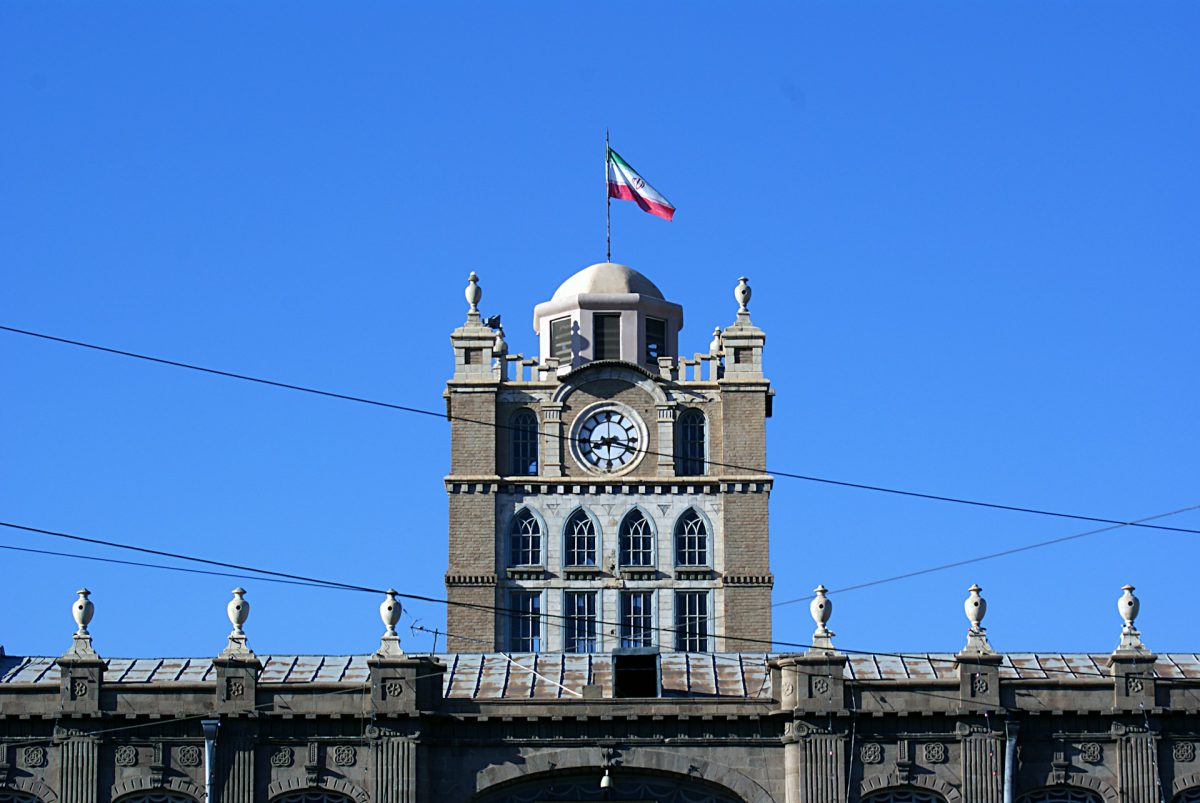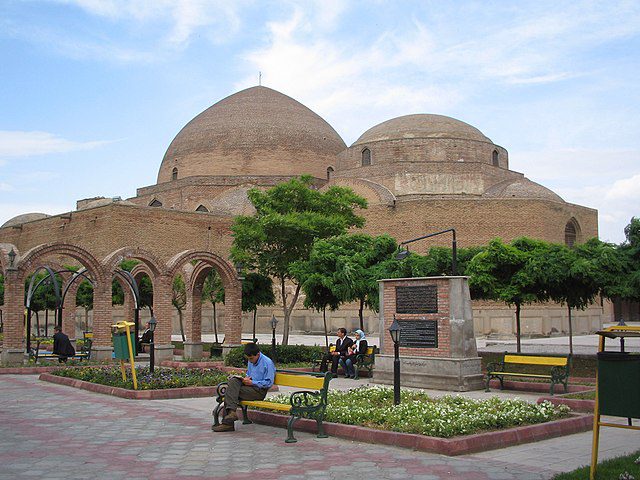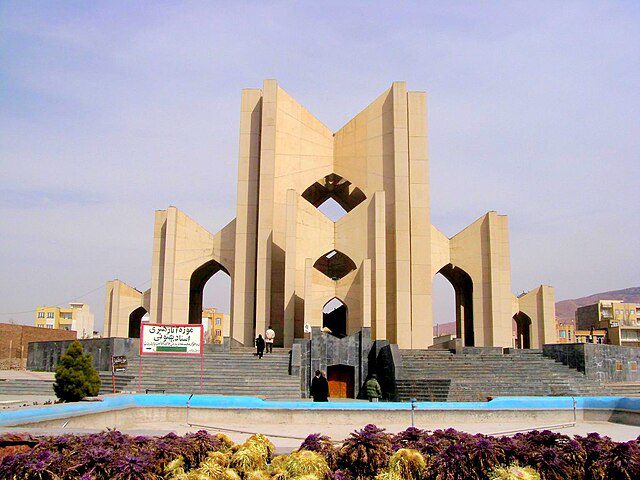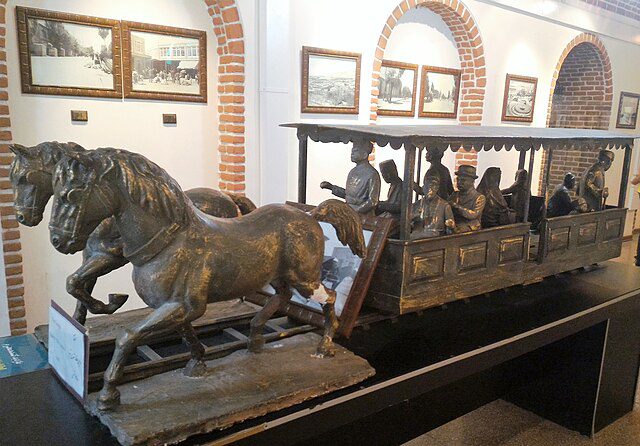Table of Contents
Tabriz, an ancient capital and the largest city in the northwest of present-day Iran, attracts tourists with its lush greenery, majestic mountains, and bustling urban atmosphere. As the cultural heart of the Azeri community in Iran, this vibrant city and its surroundings have become a popular destination for travelers. With a rich cultural heritage, Tabriz proudly presents a variety of awe-inspiring mosques, churches, and fortresses that have been passed down through generations.
Walking through the streets of Tabriz feels like stepping into a living museum. The city’s remarkable architectural wonders beautifully reflect its vibrant history. The renowned Blue Mosque, adorned with intricate tilework and graceful minarets, and the splendid Armenian church with its ornate frescoes are just a glimpse of the visual treasures awaiting visitors. Standing tall for centuries, the ancient Arg-e Tabriz fortress is a testament to the city’s storied past and offers panoramic views of the surrounding landscape.
Beyond the city limits, Iranian Azerbaijan reveals some of the most breathtaking natural landscapes in the country. Nature enthusiasts will be captivated by the lush green mountains, shimmering lakes, and picturesque valleys that dot the region. From the tranquil beauty of Lake Urmia to the enchanting vistas of Sahand Mountain, there is no shortage of natural wonders to explore. Whether you’re wandering through Tabriz’s lively markets or immersing yourself in the awe-inspiring beauty of the surrounding countryside, Tabriz attractions promise an unforgettable experience, leaving a lasting impression on every traveler fortunate enough to discover its captivating charm.
Tabriz Bazaar
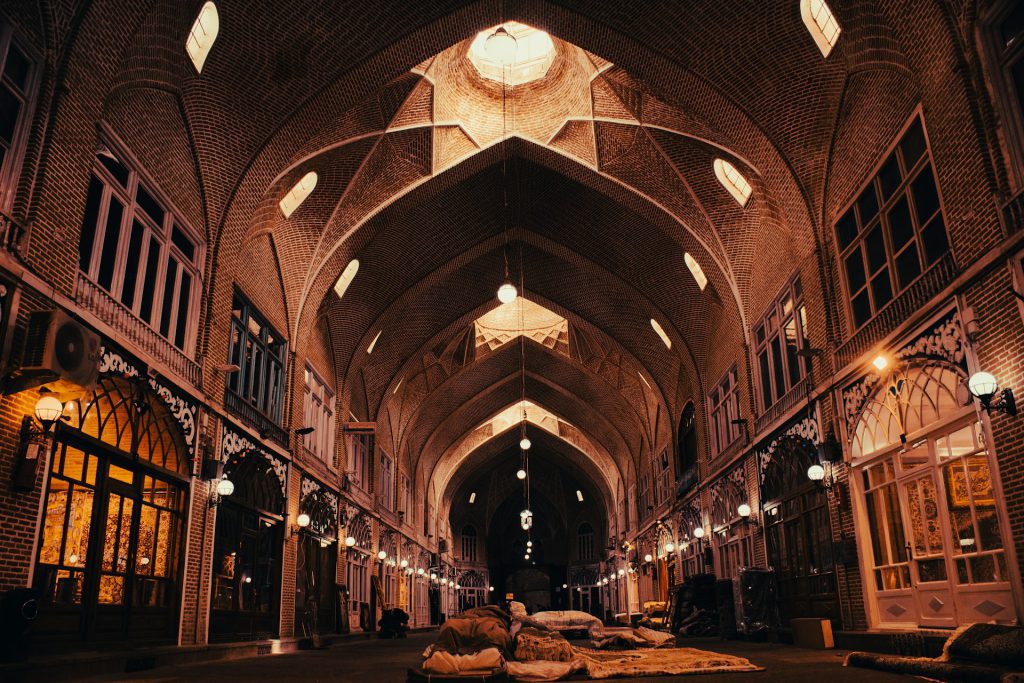
When you visit Tabriz, there’s one place that truly steals the show: Tabriz Grand Bazaar. This special market is considered one of the most beautiful Tabriz tourist attractions and has even earned a prestigious UNESCO World Heritage status. Way back in the 16th century, during the Safavid era, it was a bustling trading spot along the famous Silk Road. With its tall, domed ceilings, occasional rest areas for travelers, and a maze of winding lanes that seem to stretch forever, wandering through the bazaar is always a delightful adventure.
Inside the bazaar, you’ll find a world of amazing things. From flavorful spices that make your senses dance to dazzling jewelry that catches your eye, you can get just about anything here. But the real star of the show is the carpet section. Tabriz Bazaar is famous for its stunning rugs, each one a masterpiece that tells a story. They’re made with great care, reflecting the city’s rich culture and the incredible talent of Persian carpet makers. It’s like stepping into a colorful picture, immersing yourself in the traditions of Tabriz.
This bazaar is more than just Tabriz sightseeing. It’s a living reminder of the city’s strength and enduring spirit. Throughout its long history, it has seen empires come and go, yet it still stands tall, representing Tabriz’s past and present. Walking through its narrow streets feels like time travel, connecting with the echoes of days gone by. It’s a place where stories come alive, inviting both locals and visitors to uncover the captivating tales of a bygone time.
Blue Mosque
In the ancient city of Tabriz, Iran, a remarkable building stands as a reminder of both the power of earthquakes and the strength of the people who rebuilt it. The Blue Mosque, also known as Goy Masjid in the local Azeri language, carries visible marks from a massive earthquake in 1779. Though much of the mosque has been reconstructed in the last 50 years, only the entrance’s arch, called an iwan, remains from its original structure. This arch, dating back to 1465, showcases beautiful blue tiles and Islamic writing that gave the mosque its name.
The surviving iwan tells a tale of Iran’s vulnerability to earthquakes, as the country sits on many fault lines. It also speaks to the resilience of the Tabriz community. Despite the destruction, the Blue Mosque has been carefully rebuilt over five decades. The reconstructed parts pay tribute to the mosque’s rich past and feature delicate Islamic writing. However, the mix of old and new serves as a powerful reminder of the city’s uncertain position. The Blue Mosque stands as a symbol of Tabriz’s unwavering spirit and determination to overcome challenges. It is one of the best places to visit in Tabriz.
Tabriz Citadel
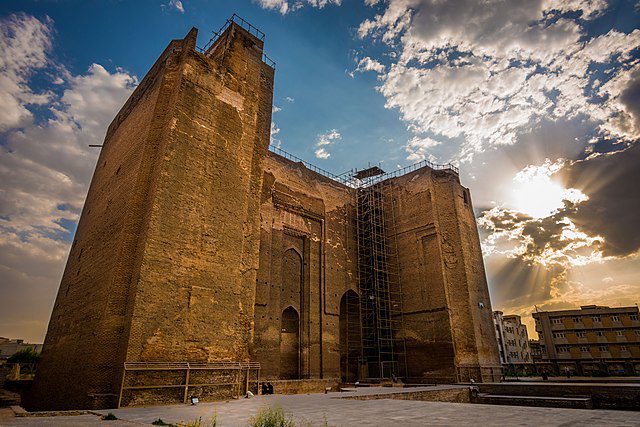
Right in the heart of Tabriz stands the Tabriz Citadel, also known as Arg-e Tabriz, a remarkable symbol of the city’s history and its ability to endure. It was built back in the 14th century as a tomb during the Ilkhanate dynasty. Later on, during the Russo-Persian wars in the 19th century, it was transformed into a military base. Throughout its existence, the citadel faced challenges and even suffered damage from Russian attacks in 1911. However, in recent years, it has undergone renovations, restoring its majestic stone structure. Today, the citadel proudly stands as one of the most famous Tabriz attractions, right on Imam Khomeini Street.
The Tabriz Citadel has seen it all, standing strong through the test of time. Its enduring presence tells the story of Tabriz’s resilience. Despite the hardships it endured, like the damage caused by Russian shelling, the citadel remains a symbol of Tabriz’s unwavering spirit.
Thanks to recent restoration efforts, the Tabriz Citadel now showcases its impressive stone architecture, drawing visitors from all over. It serves as a powerful reminder of Tabriz’s rich cultural heritage and the strength of its people. Exploring the citadel is like taking a step back in time, immersing yourself in centuries of history within its ancient walls. The Tabriz Citadel is a testament to Tabriz’s fascinating past and its ability to withstand the challenges of time, leaving visitors in awe of its enduring beauty.
Kandovan
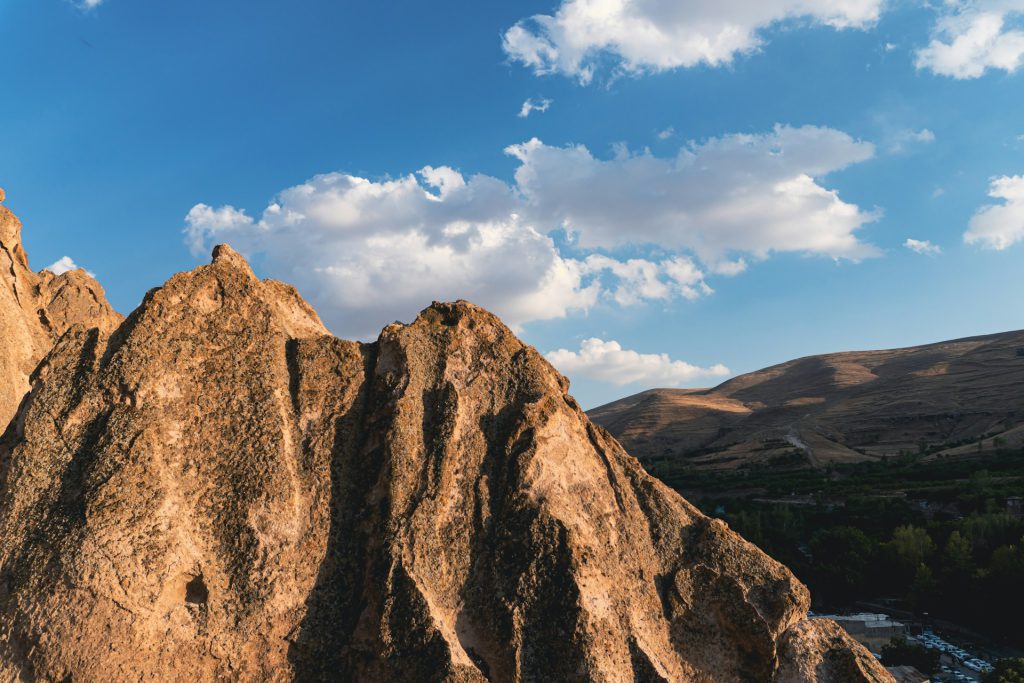
Just a little south of Tabriz, near the lovely city of Osku, you’ll find a captivating village called Kandovan. It’s been around for a whopping 850 years and is considered one of the oldest and coolest Tabriz attractions. People even say it’s a lot like Cappadocia in Turkey. The unique thing about Kandovan is that, unlike the abandoned villages in Turkey, it’s home to about 700 residents who live there.
What makes Kandovan so special is the way the houses are built. They’re carved right into the rocks using natural materials that can be found in the area. That’s why they call it “the home on its own.” Many years ago, when a big volcano named Sahand erupted, it left behind these huge hollow boulders. The clever locals used them as shelters to hide from the Mongols. And that’s how Kandovan came to be.
As you explore this amazing village, you’ll discover more than just cool buildings. The friendly people who live there are proud of their heritage and sell all sorts of yummy organic products. You can buy fresh fruits and veggies, as well as handmade crafts. Everything you see tells a story and adds to the experience of being in Kandovan. When you walk along the narrow streets, you’ll catch the delicious smell of freshly baked treats coming from cute little cafes and busy market stalls. This is where the real spirit of Kandovan comes alive, where nature and human creativity come together beautifully. Undoubtedly, it is one of the best things to do in Tabriz.
Qajar Museum
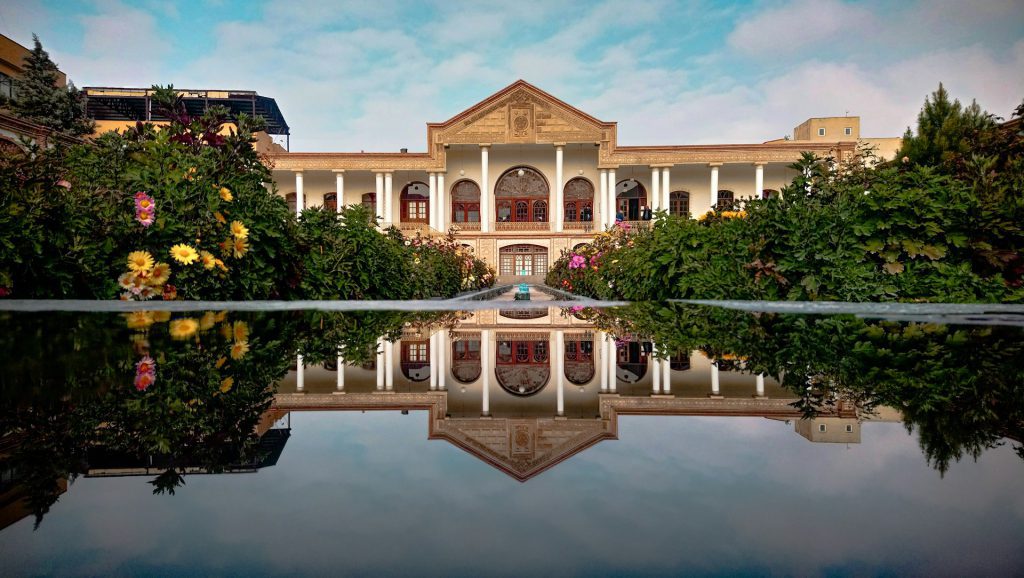
Step into a captivating historical museum located in a stunning mansion near Maqbaratoshoara. The Qajar Museum is a remarkable Tabriz sightseeing, dating back to the middle of the Qajar era. The mansion, once owned by Amir Nizam Gross, Hasan Ali Khan, covers an impressive 1500 square meters and is designed in a unique architectural style.
Inside the museum, you’ll find various rooms that showcase the fascinating artifacts from the Qajar period. Explore a room dedicated to Qajar-era money and coins, offering a glimpse into the economic aspects of the time. Move on to another room adorned with colorful dishes and tiles, showcasing the artistic talents of the era. Discover a collection of guns, weapons, and musical instruments, each telling a story of the military strength and cultural vibrancy of the Qajar dynasty.
The Qajar Museum allows you to step back in time and immerse yourself in the captivating history of the Qajar era. As you wander through its halls, you’ll be transported to a world long gone, experiencing the legacy and tales of this significant period. Prepare to be enthralled by the wonders that await you in this remarkable journey through the corridors of history.
Jameh Mosque
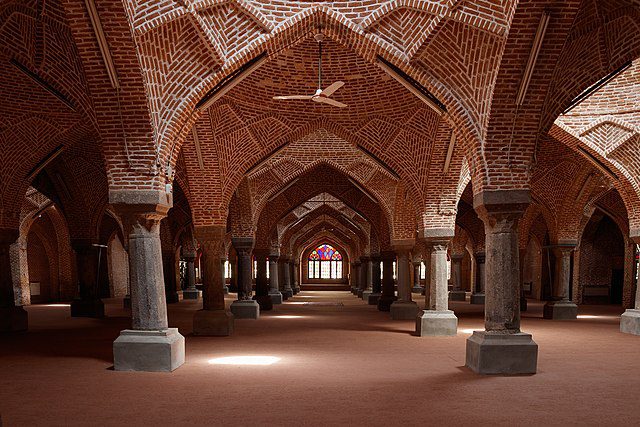
Located next to Tabriz Bazaar, Jameh Mosque has endured numerous earthquakes throughout its existence, leading to various reconstructions. As a result, the mosque boasts a captivating mix of old and new elements, making it truly one-of-a-kind. Its most striking features are the two tall minarets with three tiers each, standing proudly as a testament to its grandeur. Additionally, the entrance of the mosque is adorned with stunning mosaic work that frames it remarkably.
Approaching Jameh Mosque, your attention is immediately drawn to the impressive minarets that reach towards the sky, symbolizing the mosque’s resilience over time. These tall structures exude a sense of majesty and silently tell stories of the mosque’s enduring history. However, it is at the entrance where the true magic unfolds. A meticulously crafted mosaic greets visitors, showcasing intricate patterns and vibrant colors in a captivating display of artistry. Every tile, carefully placed by skilled artisans, weaves together a tale of the mosque’s rich past. This mosaic masterpiece blends traditional motifs with modern influences, creating an enchanting invitation for all who pass through.
Jameh Mosque stands as a living testament to the passage of time and the beauty that emerges from it. This Tabriz sightseeing invites visitors to embark on a journey through history, where ancient prayers and contemporary life intertwine. Exploring its sacred halls, a profound sense of reverence washes over you, connecting you to the countless individuals who have sought solace within its walls.
Beyond being a place of worship, Jameh Mosque is a sanctuary where the echoes of the past harmonize with the present, leaving an everlasting impression on all who have the privilege to experience its magnificence. It is one of the best things to do in Tabriz.
Mausoleum of Poets
Just outside Tabriz’s busy city center in Iran, you’ll find a remarkable tribute that combines Iranians’ love for grand mausoleums and the magic of poetry. Welcome to the Mausoleum of Poets, one of the captivating Tabriz attractions that celebrates the great poets and thinkers from Tabriz’s past. Here, over 400 influential artists and writers from the 9th to the 20th centuries rest in peace, leaving behind a lasting legacy.
As you approach the Mausoleum of Poets, its impressive presence catches your eye. Built in the 1970s, the mausoleum stands tall with its strong, angular structure, leaving a memorable mark on Tabriz’s skyline. The surrounding park adds a peaceful touch, inviting visitors to take a leisurely walk and reflect on the profound impact these poets and thinkers had on Iranian culture.
Azerbaijan Museum
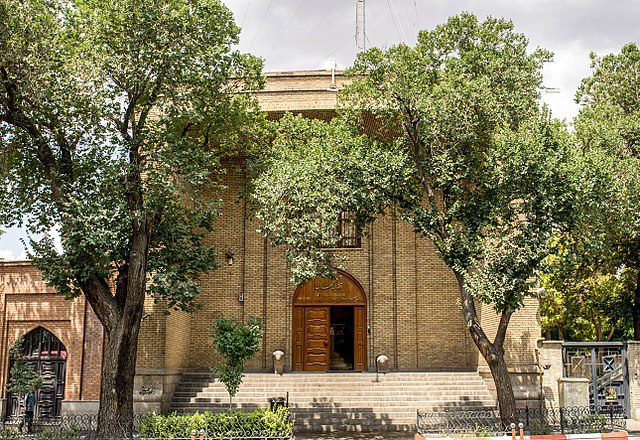
Situated conveniently near the famous Blue Mosque, the Azerbaijan Museum is one of the best things to do in Tabriz that warrant the hour or so it takes to explore. This Tabriz sightseeing is divided into three halls, each offering its unique collection. However, the real gems lie in the ancient relics from the Iron Age. These artifacts provide a captivating window into the past and showcase the ingenuity of civilizations that once thrived in the region. From well-crafted tools to beautiful pottery, every item tells a story of skill and craftsmanship that has endured through the ages.
As you delve deeper into the Azerbaijan Museum, you’ll encounter a particularly powerful sight—the basement’s stirring sculptures that reflect on the themes of violence and war. These artworks leave a lasting impression, evoking a sense of somber contemplation. They serve as a stark reminder of the profound impact of human conflict throughout history. Standing in front of these haunting sculptures, one cannot help but ponder the fragility and resilience of the human spirit.
The Azerbaijan Museum offers an immersive experience, bringing history to life through its diverse collection of artifacts and thought-provoking exhibitions. Whether you’re a history enthusiast or simply curious about the past, this hidden gem of Tabriz attractions guarantees an unforgettable journey through time.
El Goli
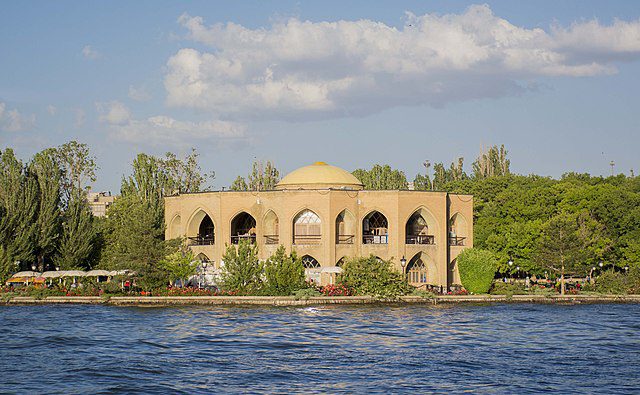
Located in Tabriz, El Goli Park is a serene getaway where families can relax in a beautiful natural setting. The park features a unique structure situated on a hillside, surrounded by a swimming pool, offering a breathtaking view of Tabriz from its elevated position. Originally known as Shah Goli, the park’s name changed during the revolution to “El Goli,” meaning “people’s lake” in Turkish. This transformation reflects its role as a beloved gathering place for the community.
When you step into El Goli Park, you’ll be greeted by its tranquil beauty. The park is filled with lush greenery, colorful flowers, and the soothing sounds of water, creating a peaceful atmosphere that instantly puts you at ease. Whether you’re taking a leisurely stroll along the winding paths, enjoying a picnic on the well-maintained lawns, or simply sitting by the pool, every corner of the park invites you to unwind and recharge.
El Goli Park is not just Tabriz sightseeing; it also holds historical significance for Tabriz. It stands as a symbol of the city’s heritage and its commitment to preserving its past. Whether you’re a local in need of a peaceful retreat or a visitor looking to experience Tabriz attractions, El Goli Park is a must-visit destination that guarantees a memorable and rejuvenating experience.
Tabriz Municipality Museum Palace
Tabriz Municipality Museum Palace, also known as Sa’at Tower, is an important government building located in Tabriz, East Azerbaijan province. It is considered one of the best Tabriz tourist attractions and historical landmarks. Built in 1934, it has been the main office for Tabriz’s city government for a long time.
During World War Two, the Azerbaijan Democrat Party used the building as their office. After Iranian soldiers took back control of Tabriz in 1947, it became the city’s main government office again and has stayed that way ever since. Over time, the palace has seen some changes. In the 1990s, there was an unsuccessful attempt to install an elevator, which damaged one of the courtyard areas. However, in 2008, they rebuilt the dome on top of Saat Tower using a new khaki-colored fiberglass material, replacing the old silver-colored dome.
Inside the palace, there is a museum that opened in 2007. The museum has old maps, photographs, and different objects that show Tabriz’s history. Visitors can learn about the city’s past and see interesting things like the first taxicabs and tracks used by fire engines. Also, because Saat Tower is in a central location, it is often used for events and meetings in the city. This adds to its importance as a lively place in Tabriz.
Tabriz Municipality Museum Palace, with its fascinating history and varied exhibits, tells the story of Tabriz’s rich culture. It has played a crucial role as the city government’s headquarters and now houses a museum where visitors can explore Tabriz’s heritage. The palace stands tall, inviting everyone to discover the captivating tale of Tabriz’s past.
FAQs about Tabriz Attractions
Q1: Is Tabriz worth a visit?
A1: Tabriz is a city that is worth visiting because it has a really special place called the Tabriz Great Bazaar. This bazaar is the largest covered market in the whole world and it has been recognized as a world heritage site.
Q2: What is Tabriz known for?
A2: Tabriz is an important place for heavy industries like making cars, tools, refineries, petrochemicals, textiles, and cement. It’s also well-known for its beautiful crafts, such as hand-woven rugs and jewelry.
Q3: Is Tabriz a good city?
A3: Tabriz is a city known for its cleanliness and safety. It has very few people who are addicted to substances, making it a relatively safe place to live or visit.
Q4: What are people from Tabriz called?
A4: The majority of people living in Tabriz are of Azerbaijani descent.
Q5: Why visit Tabriz?
A5: Tabriz is often referred to as an “open space museum” or “the city of souvenirs.” It is also known as the capital of Iran’s candy and sweet industry. This beautiful city is filled with a rich collection of historical, natural, and sociological monuments, making it a top destination for tourism in western Iran.
Last Words: Explore the Best of Tabriz Attractions with a Customized Tour
Tabriz is an old capital and the biggest city in northwest Iran. It attracts tourists with its beautiful greenery, majestic mountains, and bustling city atmosphere. It is the cultural center for the Azeri community in Iran and is a popular destination for travelers. Tabriz has a rich cultural heritage and boasts impressive mosques, churches, and fortresses that have been passed down through generations.
If you are planning to travel to Iran and want to experience the best of Tabriz attractions, it is highly recommended to embark on a customized and tailored tour. To Iran Tour understands the significance of these attractions and ensures that they are included in their itineraries.
So, if you are looking to have a great experience in Iran and explore the best of Tabriz attractions, consider embarking on a customized tour with To Iran Tour. Let their expertise and dedication to excellence help you create lasting memories of your journey through this remarkable country.

